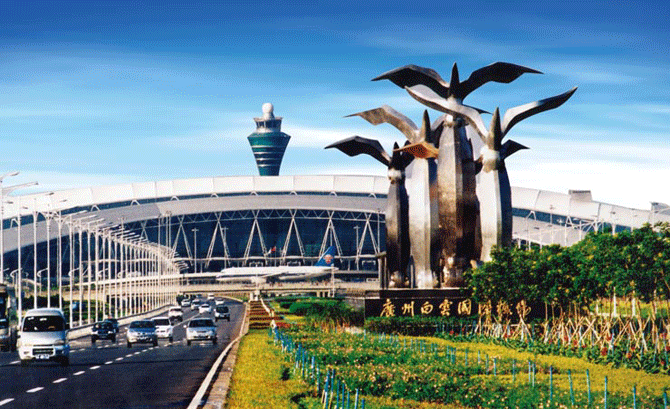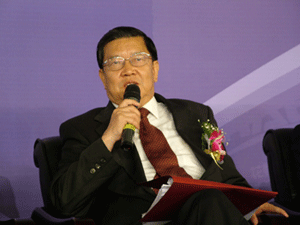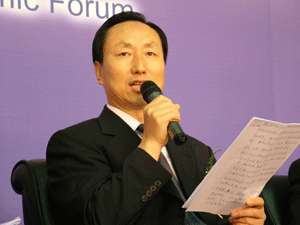Baiyun A China Beauty

Guangzhou New Baiyun International
Airport came into service on August 5th, 2004.
Located in the Huadu District of Guangzhou,
New Baiyun is one of the three major airports of China.
But here airport planners and local
business leaders are confident they have struck gold.
By locating Baiyun Airport from the
center of the city to Huadu an onslaught of opportunities have gravitated
to this district, making it one of the most promising areas of Guangzhou,
even of Guangdong Province.
New Baiyun Airport is experiencing
rapid growth, with passenger volume increasing from 15 million in 2003
to 23.5 million in 2005.
What is more remarkable, is the over
100 percent growth rate of international air cargo volume. The rising
tide lifts all boats too with the economy of Huadu District recording
GDP growth in 2005 over 20 percent.
Owing to New Baiyun Airport’s
extension programs and FedEx’s project to build its Asia Pacific
region transition center, Huadu District is now bracing for even more
expansive growth year on year.
Earlier this summer the Huadu Airport
Economy Forum 2006, co-organized by local government of Huadu District
and Guangdong Airport Management Group, attracted over 300 entrepreneurs
and experts to discuss ways to better grasp the opportunities brought
by the airport.
“To Build Huadu Into China’s
Memphis,” a slogan formally brought up at the forum, succinctly
defines Huadu’s development strategy in the future.
Memphis, the largest city of Tennessee,
U.S., has enjoyed great economy benefit from FedEx cargo transportation
at Memphis International Airport in the past quarter century.
The Baiyun motto when thinking Memphis
could be “pick out a good thing and be better.”
 Mr.
Long Yongtu, General Secretary of Boao Forum for Asia, who presided over
the forum, got the ball rolling by stating: Mr.
Long Yongtu, General Secretary of Boao Forum for Asia, who presided over
the forum, got the ball rolling by stating:
“Compared with the other two
major airports of China, Capital Airport in Beijing and Pudong Airport
in Shanghai, Guangzhou New Baiyun Airport may be the best.
“This is a fundamental advantage
for building Huadu into China’s Memphis.
“The key to airport economy
is logistics.
“As we know, logistics cost
in China accounts for 20 percent of GDP, while in west countries only
4 percent.
“If logistics cost could be
reduced in China, then 10 percent of GDP might be saved, which could represent
about 1800 billion RMB.”
 Mr.
Liu Zijing, President of Guangdong Airport Management Group and ex-president
of Guangzhou Baiyun Airport, delivered a speech on the development of
New Baiyun Airport. Mr.
Liu Zijing, President of Guangdong Airport Management Group and ex-president
of Guangzhou Baiyun Airport, delivered a speech on the development of
New Baiyun Airport.
“Infrastructure of New Baiyun
Airport is as good or better than anywhere else in the world.
“With two runways each operated
independently, New Baiyun Airport is the first gateway in China able to
operate A380 aircraft.
“Extension programs for the
airport already underway in a process that will see among other things
within one or two years, the passenger terminal here expanded by 150 thousand
square meters.
“What’s more at this airport
there is plenty of room to grow.
”New Baiyun Airport now occupies
an area of 18 square kilometers, with 88 square kilometers more reserved
for near term expansion and up to 160 square kilometers under total development.
“Over time, New Baiyun Airport
will operate five runways.
“Our third runway was projected
to be built in 2010.
“However, rapid cargo and passenger
expansion have made it necessary to accelerate construction of the third
runway ahead of schedule.
“We will need to put the third
runway into service before 2010 just to satisfy demand.
“Preparation work for the second
passenger terminal, 500 thousand square meters, has begun, and construction
will initiate in 2008.
Responding to FlyingTypers
question about air cargo development of New Baiyun Airport, Mr. Liu said:
“In 2005, the New Baiyun Airport
handled 601,000 tons of cargo with an increasing rate of 20 percent year
on year, which included a doubled amount of international cargo volume,
120,000 tons.
“We expect, in 2010, our air
cargo throughput at Baiyun Airport will be 2 million tons, as we break
into the top 15 busiest airports in the world.
“With a transfer rate of 30
percent, half of which is international cargo, we are evolving into a
comprehensive air cargo hub of the Asia-Pacific.
“We will establish an international
neutral terminal with a surface area of 800,000 square meters.
“The construction will be completed
with 10 cargo stands available at the same time. Designed annual throughput
of air cargo is 520,000 tons.
“Also, according to the Guangzhou
Development Plan of Modern Logistics and The Development Plan of the Airport’s
International Logistics Area, the Airport Logistics Bonded Area will come
into service soon, with 8 square kilometers in the plan of the first phase,
and 20 square kilometers in the future plan.
Regarding FedEx’s transition
center, Mr. Liu said:
“FedEx covers an area of 2400
acres, with 28 special gate positions of cargo freighters.
“The project is designed to
handle 125,000 pieces of express mail and 1,800 tons of cargo daily.
“Investment totals 240 million
RMB.
“FedEx Center here will be put
into use by the end of 2008.
“Once in service, there will
be 150 cargo flights every week, which will bring about 600-800 thousand
tons of cargo to the airport that will more effectively connect Mainland
China with other points in Asia to Europe and the Americas.
“The project will improve the
investment environment of Guangzhou to accelerate human resources flow,
logistics flow and capital flow raising its status in the global cargo
network.”
New Baiyun Airport currently is the
base of three airlines, China Southern Airlines, Shenzhen Airlines and
Hainan Airlines.
Today there are 37 international routes
connecting 31 cities abroad and 95 domestic routes to 88 cities available
in Baiyun Airport.
Estimates of annual growth rate here
are put at 27 percent for air cargo volume of New Baiyun Airport to 2010.
(David)
|



